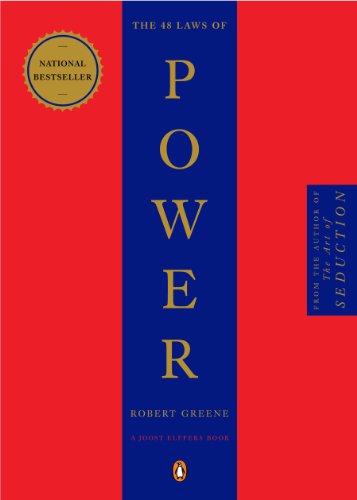

This article is an excerpt from the Shortform summary of "The 48 Laws of Power" by Robert Greene. Shortform has the world's best summaries of books you should be reading.
Like this article? Sign up for a free trial here .
Overview of Law #37: Create Compelling Spectacles
In addition to words, use visuals and symbols to underscore your power. What people see makes a greater impression on them than what they hear. Put on a show using stunning visuals and powerful symbols that connect with people emotionally. Create compelling spectacles and no one will notice what you’re really doing.
Principles of Law 37
Our visual sense is the one we depend on the most. What we see makes a greater impression than what we hear. Images, which bypass rational thought, create powerful emotional associations, and they rarely anger or offend people the way misheard or misinterpreted words can.
According to Law 37 of the 48 Laws of Power, associating yourself with images and symbols will underscore and enhance your power. Use symbols to rally, excite, and unify your followers. Find a symbol to represent your cause, the more emotional the association the better. You can add to the emotional power by incorporating old, revered symbols in new ways.
For example, during the rebellion against the French crown in 1648, loyalists to the king ridiculed the rebels, comparing them to slingshots used by small boys. A cardinal turned the mocking term into a symbol, which the rebels wore and incorporated into a rallying cry.
Incorporate and organize your images and symbols into a show or performance that inspires awe and distracts people from their mundane lives. Always pay attention to how you arrange things visually — put the most important images at the center; use color as well.
Create compelling spectacles and words won’t be necessary.
Putting Law 37 to Work
Here is an example of how to apply Law 37 of the 48 Laws of Power: Diane de Poitiers, who was the mistress of King Henry II of France, kept him enthralled with her from his teens until he died, when she was in her sixties. She kept his attention in part by creating arresting visuals and symbols representing herself and their relationship.
For instance, she created a graphic depicting their relationship with their initials intertwined. She incorporated it into all aspects of the design of her castle, and he used it on his robes and on public monuments and churches. Also, Diane associated herself with the goddess Diana, rooting their relationship in powerful mythology. Images of Diana as a goddess were the motif at her castle and began appearing elsewhere as well. Poets wrote verses in her honor. Henry essentially worshipped her, making her a duchess and sharing his wealth. He was dependent on her. De Poitiers knew how to create compelling spectacles and used them to her advantage.
Set yourself apart by associating with a powerful image, symbol, or figure of the past. You’ll seem larger than life and keep your audience enthralled.
Exceptions to Law 37
Are there any exceptions to Law 37 of the 48 Laws of Power? Should you ever not create compelling spectacles? There’s no downside to creating and using symbols to enhance your power. Follow Law 37: Create Compelling Spectacles.
———End of Preview———

Like what you just read? Read the rest of the world's best summary of "The 48 Laws of Power" at Shortform . Learn the book's critical concepts in 20 minutes or less .
Here's what you'll find in our full The 48 Laws of Power summary :
- Why you should never outshine your boss
- How to appear like a friend but behave like a spy
- The 6 rules you absolutely must not violate, if you want to be successful






